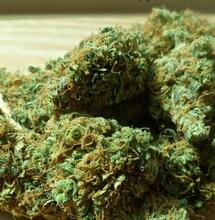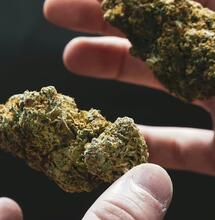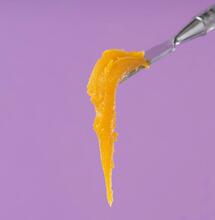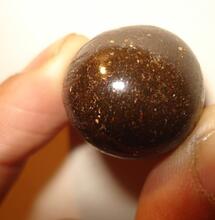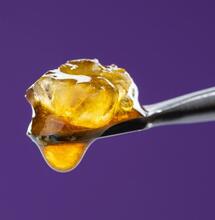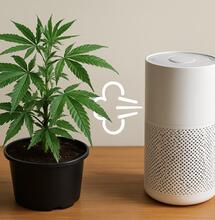Why Cannabis Concentrates Are Used As Medicine
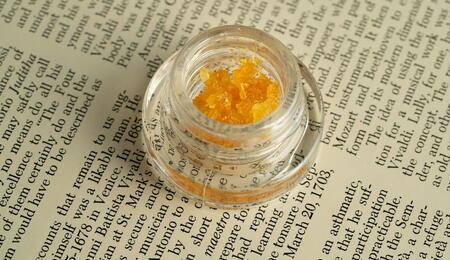
Concentrates, a historically more potent form of Cannabis medicine, are produced through a variety of methods, both ancient and modern.
Cannabis is moving into a new role in our world, taking its rightful place as a medicine rather than a demonic villain. As our world moves towards a more progressive view of weed and its medicinal value, a variety of Cannabis preparations are being formulated. Historically, the Cannabis flower was most often smoked, eaten or consumed as tea or in the form of an alcoholic tincture. Cannabis was also used in topical poultices to treat arthritic pain. A concentrate was made from the resin on the flowers, produced by glandular trichomes, where most of the active ingredients of Cannabis (cannabinoids) are located.
Resin is a glandular secretion that also contains terpenes, another medicinal molecule found in Cannabis. (The exact medical effects of these terpenes have not yet been fully investigated.) Different methods of collecting and concentrating this resin have existed throughout history; traditionally, it was collected by rubbing the flowers until the sticky trichomes adhered into lumps and balls. Alternately, flowers were passed over a cloth that strained away the resin glands, which then accumulated in a bowl. Nowadays modern chemistry has been implemented to produce medicines that are more potent and more pure to consume. But are they really more pure?
Cannabis tea does have mild relaxant properties and helps relieve the symptoms of urinary tract inflammation and other ailments; however water, a polar solvent, does not effectively extract the cannabinoids. The warmth of the hot water will dissolve some of the oily cannabinoids and some people add butter or milk/cream as a simple extraction method. Cannabis resin is viscous and sticky, so Cannabis flowers must be soaked in alcohol or another relatively non-polar solvent in order to extract or wash away their oily covering that is rich in cannabinoids.
There are approximately four hundred biologically active compounds in the Cannabis flower and plant. Cannabinol, tetrahydrocannabinol, cannabidiol and a variety of terpene molecules are thought to be some of the medicinal substances found in the flowering tops of Cannabis. Terpenes are a volatile substance within the flower. In nature, terpenes give flowers their fragrance. While aromatherapy has implemented the medicinal properties of terpenes gathered from other flowers, the actions of the terpene molecules in Cannabis have yet to be fully scientifically investigated.
The cannabinoids form a reaction chain of molecules inside the plant. Cannabis plants produce cannabinol, then isomerize (chemically alter) it into tetrahydrocannabinol as the flowers mature. After a peak of maturity, tetrahydrocannabinol begins decomposition into cannabidiol. Modern science has only begun to explore the medicinal uses of other major products found within female Cannabis flowers. It has been determined that cannabinol has pain-relieving properties without the psychoactive properties of tetrahydrocannabinol. Cannabidiol is said to have more sedating and relaxing qualities.
Alcohol is a common tool for extracting cannabinoids from Cannabis. As a solvent, alcohol is half polar, half non-polar. Extracted cannabinoids can then be concentrated into a tincture or gum-like residue, once the alcohol has evaporated - terpenes would be part of this extraction. This type of extraction would be crude because it contains other alcohol-soluble compounds (chlorophyll and plant fibers are two of many). Oral consumption would be tolerable but it is undesirable to smoke chlorophyll.
By cooling the alcohol first, less of these other compounds would be extracted - this is why the ice hash method of processing makes a cleaner product. The ice cools the water so that it does not dissolve compounds readily. Agitation in a small washing machine is able to wash these oily trichomes away from the plant flowers. The water is then passed through a filter screen to strain away the trichomes, then they are dried. This method extracts product without using chemicals. The undesirable compounds in the flowers and leaves are left behind, intact.
Modern chemistry has advanced our knowledge of concentrate production, such as hash oil, from plants containing Cannabis. Other solvents are now available to use for a purer product with a better taste, but many of these have a level of toxicity that exceeds the toxicity of cannabinoids. Butane gas is a common example. Butane is non-polar and rather selective in the types of chemicals it will dissolve; this quality makes it well suited for use upon Cannabis. There are two reasons not to use butane: firstly, it is highly flammable - an Internet search will offer stories of fires and explosions associated with this method. This is preventable by applying the caution of good laboratory technique. Secondly, and more problematically: because common butane is not made for drug production, it is contaminated with other chemicals, most often substances that can be potent carcinogens.
How to Remove Contaminants from Cannabis Concentrates
Certain techniques in chemistry remove contaminants and excess butane. A common technique is to purge the extract in a vacuum environment. Lowering the atmospheric pressure by creating a vacuum allows for the evaporation of solvents that are more volatile. Heating the extract in a vacuum to around 110º F will expedite this process. 'Winterization,' another technique for removing contaminants, utilizes an alcohol wash of the butane extract. This washes away benzene and other contaminants left over from the initial washing or extraction of the Cannabis flowers with butane. Such processes of decontamination will change the consistency of the extract to that of honey, wax or glass. 'Shatter' is the name for clear extract without bubbles that has the appearance of glass.
Making Cannabis Extractions with Carbon Dioxide
Carbon dioxide, considered 'harmless' to consume, is the gas found in bubbly drinks. Non-flammable carbon dioxide (CO2) is the cleanest solvent available to use in the manufacture of these liquid products. The extraction must take place within a leak-proof vessel system, as it is under intense pressure that the carbon dioxide gas turns into a liquid that dissolves cannabinoids. Most carbon dioxide is removed but any that remains within the extraction is not dangerous.
Are these cannabinoid oil extractions the cleanest and purest form of cannabinoids? As we have seen, this depends upon what is used in their manufacture and how the manufacturing is done. Perhaps it is a matter of personal preference.
More on this topic from Soft Secrets:

